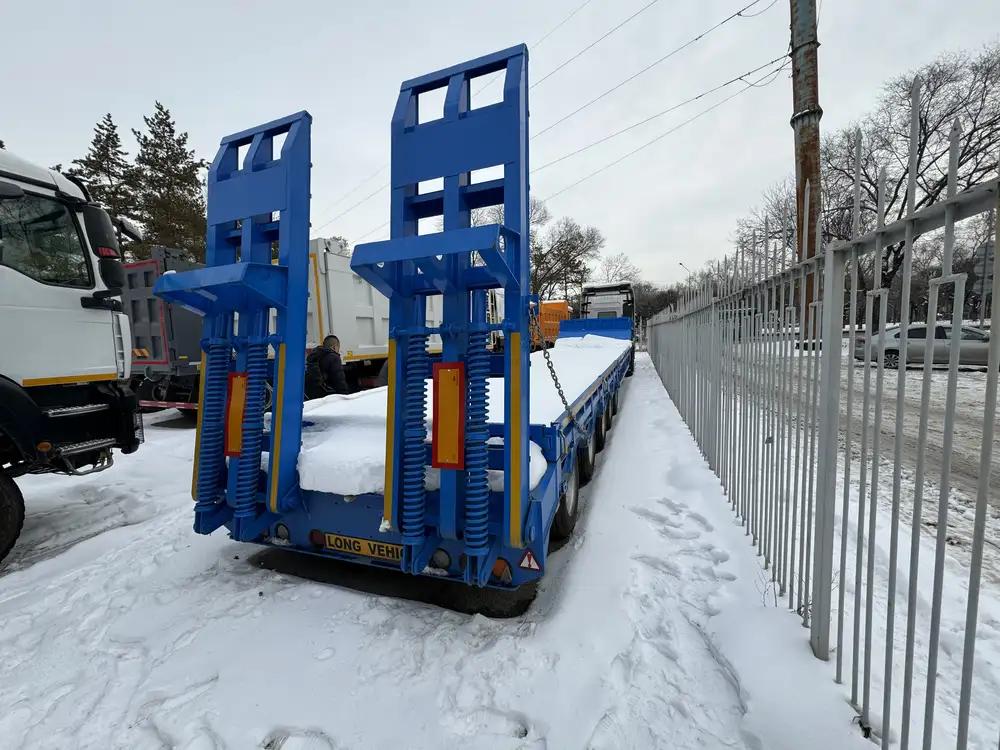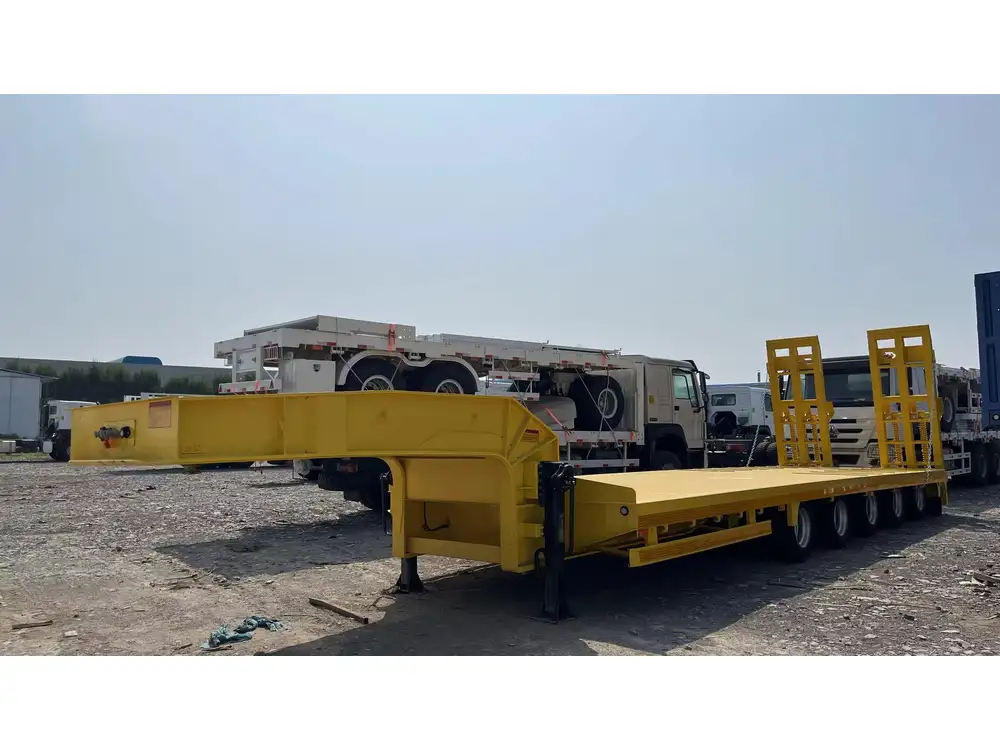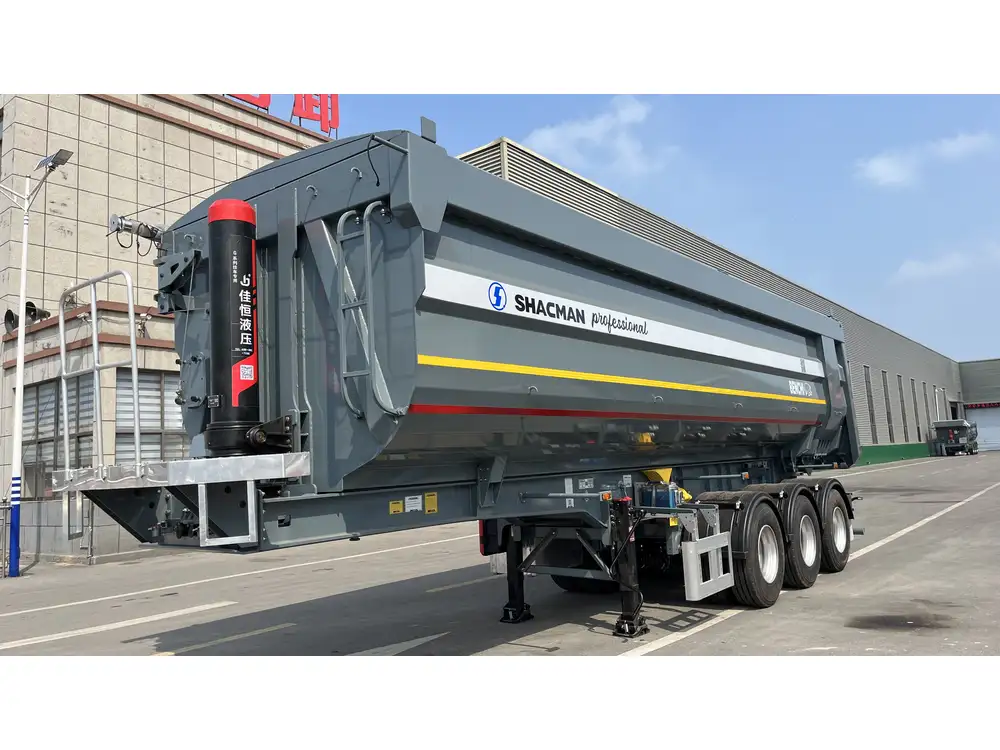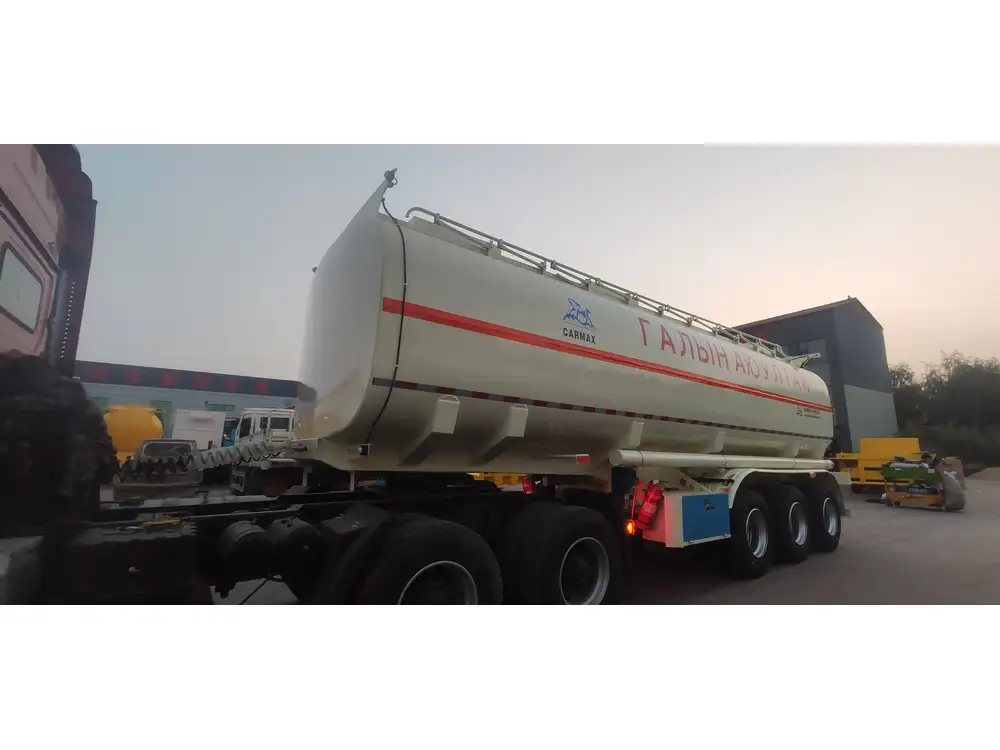Building a gooseneck dump trailer can be a rewarding endeavor for those who need a rugged, hauling solution for heavy loads. Whether you are a DIY enthusiast looking to save on costs or an individual keen on customizing your trailer to specific requirements, undertaking this project requires careful planning and execution. Below, we delve deeply into the intricacies of crafting a gooseneck dump trailer, offering a blend of useful insights, design tips, and practical advice.
Understanding the Components of a Gooseneck Dump Trailer
Before diving into construction, it is crucial to comprehend the essential components that make up a gooseneck dump trailer. Understanding these parts will facilitate easier assembly and troubleshooting down the line.
| Component | Description |
|---|---|
| Chassis | The main frame that supports the trailer; typically constructed from heavy-duty steel or aluminum. |
| Gooseneck Coupler | This connects the trailer to the towing vehicle, allowing for better weight distribution and maneuverability. |
| Dump Bed | The box area where loads are carried, designed to tilt for easy unloading. Can be made from steel or aluminum. |
| Axles | Essential for load distribution; double axles are common for heavier loads. |
| Wheels | Usually 15″ or larger, designed to support the trailer’s weight and ensure stability. |
| Hydraulic System | This system enables the dump bed to tilt; includes a pump, reservoir, and cylinders. |
| Electric Brakes | Enhances stopping power and ensures safety while hauling heavy loads. |
| Lighting System | Essential for visibility and compliance with road safety regulations. |
Essential Tools and Materials
Embarking on building a gooseneck dump trailer necessitates the right tools and materials. Here’s a pertinent list to ensure that you’re equipped for the task:

Tools Required
- Welding Equipment: MIG welder or TIG welder for joining metal pieces.
- Cutting Tools: Plasma cutter, saws, or cutting torches for precision cuts.
- Drilling Equipment: Drill and bits for creating bolt holes.
- Measuring Tools: Tape measure, square, and level for accurate alignment.
- Safety Gear: Welding mask, gloves, ear protection, and safety glasses.
Materials Needed
- Steel/Aluminum Sheets: For the trailer frame and dump bed.
- Gooseneck Coupler: Specific to your towing vehicle.
- Axles: Appropriate for the weight requirements.
- Hydraulic Cylinder: For the lifting mechanism.
- Hydraulic Pump: To operate the hydraulic system.
- Wiring: For lights and brakes.
- Tires/Wheels: Rated for the expected load.
Designing Your Gooseneck Dump Trailer
Designing your gooseneck dump trailer is a crucial step that affects not only functionality but safety. Below is a structured approach for effective design:

1. Determine the Dimensions
The size of your trailer will depend largely on what you intend to haul. Common dimensions include:
- Width: Generally 6 to 8 feet to comply with road regulations.
- Length: Between 10 to 20 feet, with consideration for maneuverability.
- Height: Ensure the dump bed’s height accommodates easy loading and unloading.
2. Weight Capacity
Calculating the weight capacity is imperative. A standard gooseneck trailer can usually carry between 10,000 to 30,000 pounds. To check load limits, consider:
- Materials Used: Steel is heavier but provides durability.
- Axle Ratings: Ensure they are rated for the total weight of the trailer and load.
- Distribution: Center the load effectively to prevent swaying.
3. Frame Construction
When constructing the frame, opt for a design that enhances strength and stability:

Recommended Frame Design:
- Use a box beam construction for added strength. This design minimizes flex and distributes weight evenly.
4. Setting the Dump Bed Angle
The angle at which the dump bed tilts significantly influences unloading efficiency. Consider a tilt angle of 45 degrees as the industry standard for optimal dumping without overextension.
Step-by-Step Building Process

Step 1: Construct the Chassis
- Cut steel beams to desired lengths for the main frame.
- Join beams using a MIG welder, ensuring that all corners are square.
- Add cross members for added strength and rigidity.
Step 2: Install the Axles
- Fit axles according to the calculated trailer width.
- Use appropriate hangers and hardware to secure them.
- Ensure that the axle alignment is precise for stable towing performance.
Step 3: Build the Dump Bed
- Fabricate the dump bed from steel sheets, ensuring all seams are welded for structural integrity.
- Attach the dump bed to the chassis using hinges on the rear side, allowing for a tilting mechanism.

Step 4: Integrate the Hydraulic System
- Mount the hydraulic pump onto the frame, ensuring it’s accessible for maintenance.
- Install hydraulic cylinders on each side of the dump bed.
- Connect the hydraulic lines from the pump to the cylinders, ensuring there are no leaks.
Step 5: Electrical Wiring
- Workshop to wire the lighting system. Ensure that all connections are insulated and weatherproof.
- For the brake lights, connect to the pin connector on the gooseneck coupler.
Step 6: Finishing Touches
- Inspect all welds and bolts for structural integrity.
- Clean and paint the trailer with rust-resistant coatings.
- Add reflective tape for visibility during nighttime.

Safety Considerations
Emphasizing safety is paramount when constructing a trailer. Here are key practices to ensure you mitigate risks:
- Regular Inspections: Before each use, inspect the trailer’s frame, brakes, and electrical components.
- Weight Distribution: Ensure loads are evenly distributed across the trailer to prevent tipping when unloading.
- Safety Chains: Always use safety chains between the towing vehicle and trailer to prevent separation.
Maintenance Tips for Longevity
Prolonging the life of your gooseneck dump trailer requires diligence in maintenance. Here are essential practices:
1. Clean the Trailer Regularly
- Remove debris from the bed and check for accumulated dirt or rust.
- Use a pressure washer for thorough cleaning after heavy usage.

2. Inspect the Hydraulic System
- Regularly check for leaks in hoses and connections.
- Ensure the hydraulic fluid levels are adequate and quality maintained.
3. Tire Maintenance
- Check tire pressure before every trip to ensure proper inflation.
- Rotate tires based on wear patterns for even wear.
4. Brake System Check
- Examine brakes for wear and functionality.
- Replace brake pads and adjust as necessary to ensure optimal performance.

Conclusion
Building a gooseneck dump trailer is an achievable project that offers both practicality and a strong sense of accomplishment. By following structured planning, ensuring safety, and maintaining diligence during both construction and usage phases, you can create a robust trailer suited for diverse hauling needs. This guide encapsulates the essentials to navigate the complexities of this build, setting you on the right path to mastering your own manufacturing endeavor. Whether you are hauling materials for landscaping, construction, or any other purpose, a custom-built gooseneck dump trailer is a versatile asset that pays dividends in performance and efficiency.



